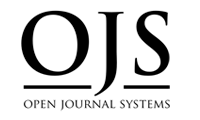Assessment of Biomass and Carbon Stock of Trees within the Campus of IGNOU, New Delhi (India)
##plugins.themes.bootstrap3.article.main##
Resumo
This study aims to assess the biomass and carbon stock of the trees within IGNOU campus situated at the Indian national capital, New Delhi for an enhanced understanding about the carbon sequestration potential of the university campuses in urban setting. The aim of the paper is centered on the need to assess terrestrial carbon pools within a campus situated in the semi-arid forests of India which is significant for building suitable action plans for the purpose of managing ecosystems amidst the threat of anthropogenic climate change occurring due to rapid urbanization. The assessment of the biomass and carbon stock of the trees of the selected species within the campus was done by non-destructive method using allometric equations used prominently in previous studies identifying a total of 20 species of the trees comprising 1260 individual trees belonging to 14 different families of the trees. Findings of this study on identified campus trees, which comprised 1,260 individual trees, demonstrated to have moderate maturity in terms of storing carbon in the form of their biomass with the average DBH 25.34 cm. The values of their estimated total biomass and carbon stock were 75.26446 t/tree and 37.63223 tC/tree respectively. The maximum value of the total biomass 13.01 t/tree was of Ficus recemos, and of the carbon stock 6.50tC/tree was of Ficus recemosa. Azadirachta indica species were found to be the most dominant species and their sampled trees were found to be able to sequester 537.526 tons of carbon in their standing biomass. The Phyllanthus emblica had the lowest carbon sequestration potential with 10.9 tons. This paper offers valuable insight with respect to the carbon sequestration potential of university campus situated in urban settings of a semi-arid forest ecosystem of Delhi by assessing the above- and below ground carbon storage potential of the trees. The findings are of significance for different stakeholders including primarily future researchers, planners and decision-makers engaged in the process of urbanization.
##plugins.themes.bootstrap3.article.details##

Este trabalho está licenciado sob uma licença Creative Commons Attribution-NonCommercial-ShareAlike 4.0 International License.



